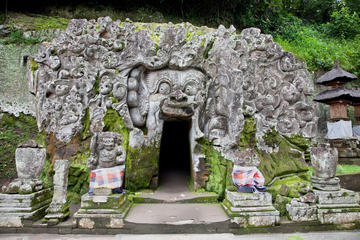Goa Gajah (Elephant Cave)
TIME : 2016/2/22 11:33:26

Goa Gajah (Elephant Cave)
One of Bali’s holiest Hindu sites (and one of its most popular attractions) is a grotto with a history dating back more than 1,000 years. Goa Gajah (Elephant Cave) has uncertain origins, but it's believed that it once served as a sanctuary for Hindu priests to meditate or even sleep.
Goa Gajah's entrance makes a menacing first impression, carved in the likeness of a gaping mouth of a demonic creature. The façade of the cave entrance features several relief carvings of various mythological creatures, and while no one is sure what they represent, local lore says that an elephant was the protagonist of the drama depicted in the carvings; hence, the nickname Elephant Cave.
The courtyard just outside the cave has more recently excavated decorative bathing pools, adorned with carvings of partially clad females pouring water from urns. The cave itself is rather small, a T-shaped space with several small ledges and a statue of Ganesh, added after the cave was excavated.
Practical Info
As an active worship site for Hindu devotees, proper dress is required for all visitors to Goa Gajah. Either long pants or a sarong should be worn to cover the knees.
